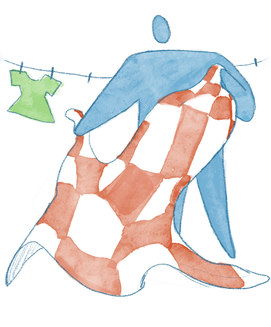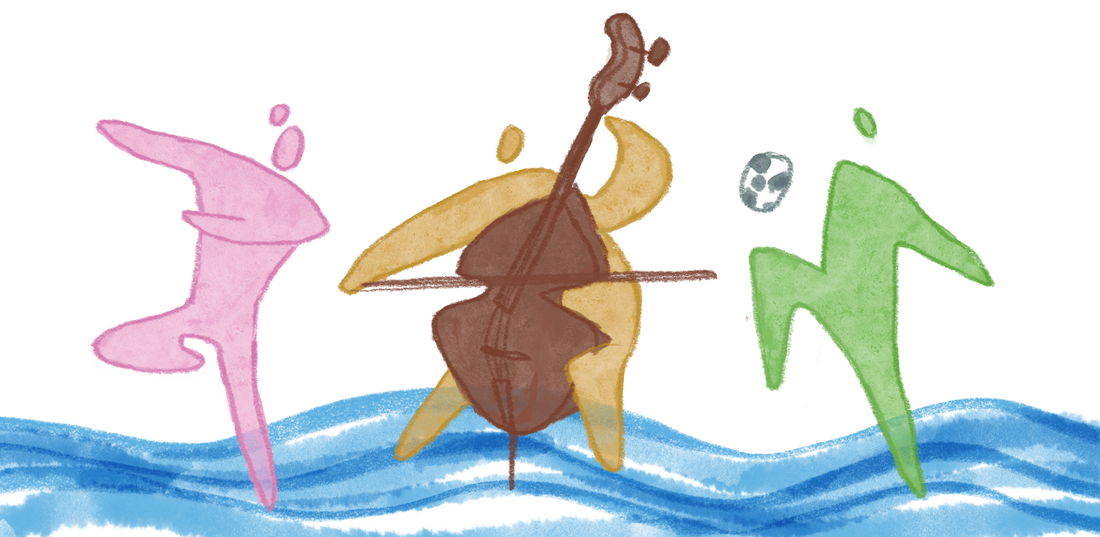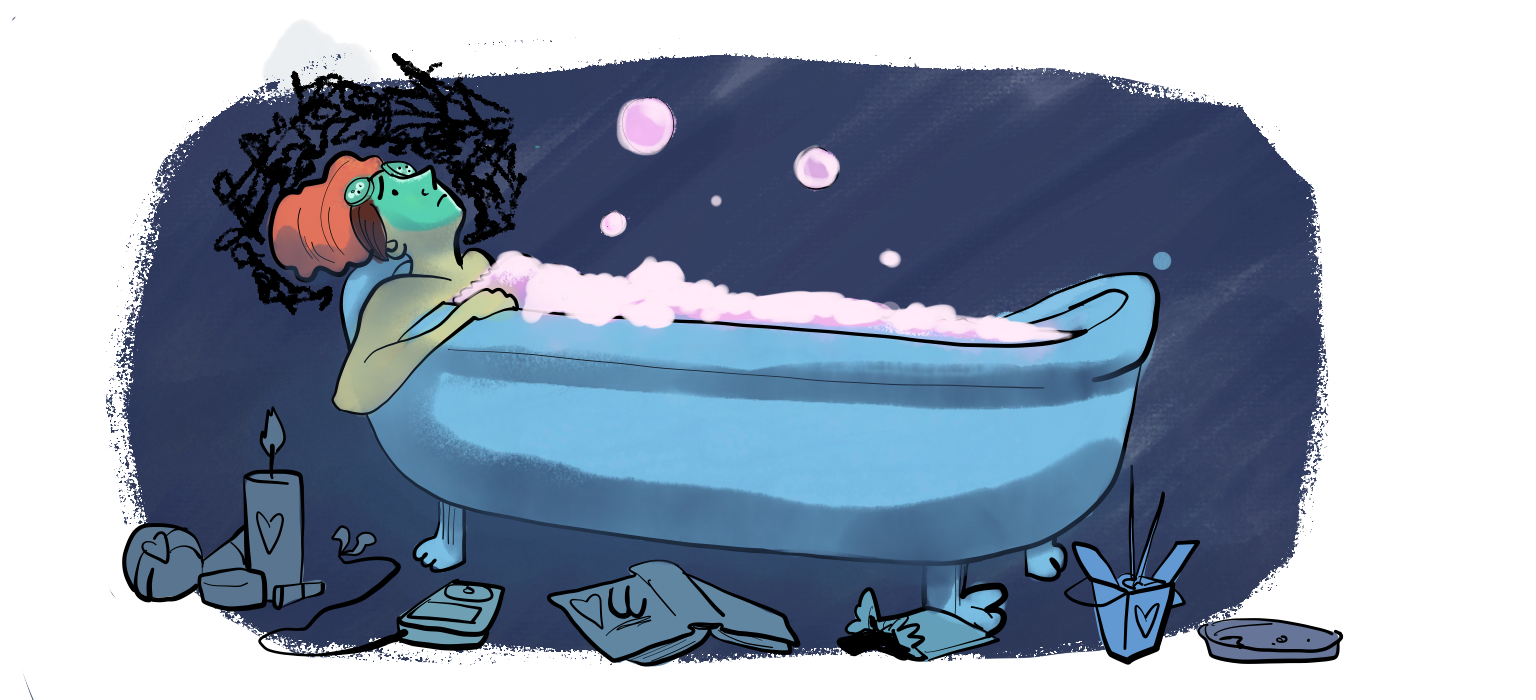Understanding Flow
“Flow” is so aptly named – like the beautiful whooshing waterfall, flow describes the mind-state of total absorption into a task. A dancer in flow loses sight of the world around her and becomes totally enmeshed with the present moment. She becomes one with the rhythm and melody, and internally, she may feel pride, accomplishment, and in other words: an endorphin rush. Even though she worked very hard to get to her level of skill, one does not have to be deeply skilled to attune themselves to flow.
Flow contains eight main aspects:
Other studies showed that people who experience large amounts of anxiety may experience greater challenges entering the flow mind-state (Kranjčev & Hlupić, 2021; Ullén et al. 2012). The data is not clear as to the exact link between anxiety and flow, nor does research clarify any impacts on anxiety from learning how to more regularly achieve flow. However, Ullén et al. could conclude from their sample that flow was not related to intelligence (2012). One does not have to be a genius chess player or virtuoso pianist to enjoy flow!
Regardless, the originator of flow, Mihaly Csikszentmihalyi, maintains that it is an important aspect of wellbeing. Through his original research, he collected a vast amount of accounts, creating a huge qualitative sample of artists, writers, teachers, rock climbers, and professional athletes. Csikszentmihalyi drew the conclusion that flow is an integral aspect of living the “good life,” and that people who are missing daily flow experiences are seriously missing out (Csikszentmihalyi, 2009).
How do I achieve flow?
Flow is simple to achieve with the right structure. Drawing the eight qualities from above, see the below step by step.
Flow is achieved when the level of skill matches with the level of challenge. However, there is a personal responsibility in understanding what level of skill we have and our degree of attention to the moment. An expert pianist could certainly enter a feeling of flow when playing Moonlight Sonata despite the fact that the piece would be easy for the pianist. Why? An expert pianist is able to achieve flow by creating a challenge from the piece, perfecting their form, accents, dynamics, etc. Essentially, anything could be a flow activity if we search for the craft in the activity.
“Flow” is so aptly named – like the beautiful whooshing waterfall, flow describes the mind-state of total absorption into a task. A dancer in flow loses sight of the world around her and becomes totally enmeshed with the present moment. She becomes one with the rhythm and melody, and internally, she may feel pride, accomplishment, and in other words: an endorphin rush. Even though she worked very hard to get to her level of skill, one does not have to be deeply skilled to attune themselves to flow.
Flow contains eight main aspects:
- Total concentration
- Clear goals and instant feedback
- Time speeds up and time slows down
- Sense of intrinsic reward
- Lack of effort and experience of ease
- Challenge and skill are equally matched
- Loss of self-evaluation and rumination
- Sense of control
Other studies showed that people who experience large amounts of anxiety may experience greater challenges entering the flow mind-state (Kranjčev & Hlupić, 2021; Ullén et al. 2012). The data is not clear as to the exact link between anxiety and flow, nor does research clarify any impacts on anxiety from learning how to more regularly achieve flow. However, Ullén et al. could conclude from their sample that flow was not related to intelligence (2012). One does not have to be a genius chess player or virtuoso pianist to enjoy flow!
Regardless, the originator of flow, Mihaly Csikszentmihalyi, maintains that it is an important aspect of wellbeing. Through his original research, he collected a vast amount of accounts, creating a huge qualitative sample of artists, writers, teachers, rock climbers, and professional athletes. Csikszentmihalyi drew the conclusion that flow is an integral aspect of living the “good life,” and that people who are missing daily flow experiences are seriously missing out (Csikszentmihalyi, 2009).
How do I achieve flow?
Flow is simple to achieve with the right structure. Drawing the eight qualities from above, see the below step by step.
- Choose a task
- This could be a skill or a chore
- For chores, often the skill you’re building is mindfulness and not necessarily increasing the quality of your work
- Recognize my current level of skill
- Eg. On piano I can play Minuet in G but not Moonlight Sonata
- Eg. I can pay attention to the sensations of folding the laundry without any other distractions for 3 second before going on autopilot
- Choose the next step to building my skill
- On piano, I need to practice each hand separately for Moonlight Sonata
- With laundry, I need to turn off all outside distractions and engage mindfully with handling the fabric, returning my attention to the fabric, being in sync with my bodily movements rather than lost in thought
- Just do it: engage with your activity at a scheduled time
- I practice piano every day at 4pm for 20 minutes
- I fold laundry at least twice per week, Sundays and Thursdays
Flow is achieved when the level of skill matches with the level of challenge. However, there is a personal responsibility in understanding what level of skill we have and our degree of attention to the moment. An expert pianist could certainly enter a feeling of flow when playing Moonlight Sonata despite the fact that the piece would be easy for the pianist. Why? An expert pianist is able to achieve flow by creating a challenge from the piece, perfecting their form, accents, dynamics, etc. Essentially, anything could be a flow activity if we search for the craft in the activity.

Is Flow Just Mindfulness?
This is a question that is yet to be meaningfully answered and I’m afraid I don’t know either. In dialectical behavioral therapy (DBT) skills training, Linehan connects to the experience of one-mindfulness to flow, but only briefly and without extensive research cited (2014). One-mindfulness is a type of informal mindfulness where the participant pays close attention during any sort of mundane task. An example of one-mindfulness can be found when washing the dishes. With one-mindfulness, we learn to love the act of washing the dishes through attention to the senses. Mindfully smelling the soap, feeling the hot water, scrubbing the dishes as if someone we love is immediately about to eat off them – by doing these things we create a mindful activity. Or do we create a flow activity? One gap in research involves the lack of comparison between neurobiological markers of the flow state and the concentration/bodily awareness mindful state. If there’s any discrimination on the face level, the sense of achievement is certainly separate from mindfulness, which often has no goal other than completing the activity for its own sake.
Either way – whether we want to achieve new heights, or just want to do something to get into the present moment – flow offers a chance for growth. Flow also offers a promise for pleasant feelings of internal reward.
“Of all the virtues we can learn no trait is more useful, more essential for survival, and more likely to improve the quality of life than the ability to transform adversity into an enjoyable challenge.” – Mihaly Csikszentmihalyi
References
8 ways to Create flow according to Mihaly Csikszentmihalyi [+TED TALK]. (2021, February 15).
Retrieved May 10, 2021, from https://positivepsychology.com/mihaly-csikszentmihalyi-father-of-flow/
Kranjčev, M., & Vukasović Hlupić, T. (2021). Personality, anxiety, and cognitive failures as
predictors of flow proneness. Personality and Individual Differences, 179, 110888.
doi:10.1016/j.paid.2021.110888
Ullén, F., De Manzano, Ö, Almeida, R., Magnusson, P. K., Pedersen, N. L., Nakamura, J., . . . Madison, G. (2012). Proneness for psychological flow in everyday life: Associations with personality and intelligence. Personality and Individual Differences, 52(2), 167-172. doi:10.1016/j.paid.2011.10.003
Linehan, M. M. (2014). DBT Skills Training Manual, Second Edition (Second Edition, Available
separately: DBT Skills Training Handouts and Worksheets, Second ed.). The Guilford Press.
Mosing, M. A., Butkovic, A., & Ullén, F. (2018). Can flow experiences be protective of work-related depressive symptoms and burnout? A genetically informative approach. Journal of Affective Disorders, 226, 6-11. doi:10.1016/j.jad.2017.09.017
Csikszentmihalyi, M. (2009). Flow: The psychology of optimal experience. New York: Harper and Row.
This is a question that is yet to be meaningfully answered and I’m afraid I don’t know either. In dialectical behavioral therapy (DBT) skills training, Linehan connects to the experience of one-mindfulness to flow, but only briefly and without extensive research cited (2014). One-mindfulness is a type of informal mindfulness where the participant pays close attention during any sort of mundane task. An example of one-mindfulness can be found when washing the dishes. With one-mindfulness, we learn to love the act of washing the dishes through attention to the senses. Mindfully smelling the soap, feeling the hot water, scrubbing the dishes as if someone we love is immediately about to eat off them – by doing these things we create a mindful activity. Or do we create a flow activity? One gap in research involves the lack of comparison between neurobiological markers of the flow state and the concentration/bodily awareness mindful state. If there’s any discrimination on the face level, the sense of achievement is certainly separate from mindfulness, which often has no goal other than completing the activity for its own sake.
Either way – whether we want to achieve new heights, or just want to do something to get into the present moment – flow offers a chance for growth. Flow also offers a promise for pleasant feelings of internal reward.
“Of all the virtues we can learn no trait is more useful, more essential for survival, and more likely to improve the quality of life than the ability to transform adversity into an enjoyable challenge.” – Mihaly Csikszentmihalyi
References
8 ways to Create flow according to Mihaly Csikszentmihalyi [+TED TALK]. (2021, February 15).
Retrieved May 10, 2021, from https://positivepsychology.com/mihaly-csikszentmihalyi-father-of-flow/
Kranjčev, M., & Vukasović Hlupić, T. (2021). Personality, anxiety, and cognitive failures as
predictors of flow proneness. Personality and Individual Differences, 179, 110888.
doi:10.1016/j.paid.2021.110888
Ullén, F., De Manzano, Ö, Almeida, R., Magnusson, P. K., Pedersen, N. L., Nakamura, J., . . . Madison, G. (2012). Proneness for psychological flow in everyday life: Associations with personality and intelligence. Personality and Individual Differences, 52(2), 167-172. doi:10.1016/j.paid.2011.10.003
Linehan, M. M. (2014). DBT Skills Training Manual, Second Edition (Second Edition, Available
separately: DBT Skills Training Handouts and Worksheets, Second ed.). The Guilford Press.
Mosing, M. A., Butkovic, A., & Ullén, F. (2018). Can flow experiences be protective of work-related depressive symptoms and burnout? A genetically informative approach. Journal of Affective Disorders, 226, 6-11. doi:10.1016/j.jad.2017.09.017
Csikszentmihalyi, M. (2009). Flow: The psychology of optimal experience. New York: Harper and Row.


 RSS Feed
RSS Feed
